- JST Home
- /
- Strategic Basic Research Programs
- /
 ACT-X
ACT-X- /
- Research Director/
- Innovations in Mathematical and Information Sciences to Build the Next-Generation AI/
- [NextAI-math-info] Year Started : 2023
[NextAI-math-info] Year Started : 2023
Shinji Iida
Protein Conformational Emsemble Generation using Diffusion Model
Grant No.:JPMJAX23C1
Researcher
Shinji Iida

Assistant Professor
School of Frontier Engineering
Kitasato University
Outline
Research on protein three-dimensional structures has seen significant advancements in recent years. However, predicting the ensemble of realistically achievable protein structures (known as the structural ensemble) remains a current challenge. While molecular dynamics simulations are an effective means to investigate structural ensembles, they come with high computational costs. Therefore, the aim is to construct a machine learning model that generates realistic ensembles of protein structures as an alternative to molecular dynamics simulations.
Takafumi Iwaguchi
Measurement and replication of the appearance of underwater scene for virtual reality
Grant No.:JPMJAX23C2
Researcher
Takafumi Iwaguchi

Assistant Professor
Faculty of Information Science and Electrical Engineering
Kyushu University
Outline
The aim of this study is to achieve realistic visual representations of underwater environments. Underwater environments are filled with water, leading to optical phenomena like absorption and scattering, making it challenging to measure in real-world conditions. Therefore, I conduct research on methods for measuring appearance parameters and generating free-viewpoint images while considering the physical phenomena underwater. Additionally, I also research style transformations for images in the air to create representations suitable for human perception and explore material editing techniques.
Satoru Iwasaki
Surrogate model based on spatial reduction theory
Grant No.:JPMJAX23C3
Researcher
Satoru Iwasaki

Lecturer
Data Science and AI Innovation Research Promotion Center
Shiga University
Outline
In this project, I attempt to construct an explainable surrogate model by utilizing reduction theory about partial differential equations. To this end, I will conduct research based on three plans: (a) mathematical study of reduction theory for partial differential equations on complex spatial domains, (b) numerical learning experiments of the proposed surrogate model, and (c) theoretical analysis of the generalization error of the proposed surrogate model.
Kazusato Oko
Understanding Large-Scale Models via Learnability Analysis of Structured Data
Grant No.:JPMJAX23C4
Researcher
Kazusato Oko

Reseach student
Center for Advanced Intelligence Project
RIKEN
Outline
We formalize real-world data as a combination of intrinsic low-dimensionality and local complexness, and, through both optimization theory and statistical learning theory, we prove learnability of neural networks, i.e., how neural networks can efficiently learn them via gradient-based methods. We apply this theory to analyze large-scale deep neural network models and discuss various phenomena from pre-training optimization to downstream task inference from a unified perspective. This aims to unveil the elements behind the success of large-scale models and work towards theory-based practical techniques, for such as model compression and dataset construction.
Shota Kato
Development of an automated physical model building AI that understands the terminology and mathematical formulas of manufacturing processes
Grant No.:JPMJAX23C5
Researcher
Shota Kato

Assistant Professor
Graduate School of Informatics
Kyoto University
Outline
Realizing a digital twin in the process industry requires a physical model of the target process. However, building a physical model requires expertise and significant effort. The ultimate goal of this research is to develop artificial intelligence (AI) that automatically builds physical models from literature databases. The AI collects relevant documents, extracts information necessary for model building from the documents, and integrates the information to build physical models. This research develops language processing techniques specific to the terminology and mathematical formulas used in manufacturing processes to demonstrate the feasibility of the automated physical model building AI.
Kentaro Kanamori
Studies on Actionable Explanation for Data-Driven Decision-Making
Grant No.:JPMJAX23C6
Researcher
Kentaro Kanamori
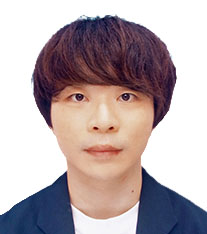
Researcher
Fujitsu Research
Fujitsu Limited
Outline
In data-driven decision-making based on machine learning technologies, explainability, which is the ability to provide human users with some additional information on the predictions of machine learning models, has been recognized as an important element for ensuring the reliability of decision-making. In this project, I focus on the counterfactual explanation (CE) that provides users with actions for obtaining their desirable outcome from machine learning models, and study a new framework of CE for improving the reliability of data-driven decision-making from the perspectives of modeling techniques and optimization algorithms.
Soichiro Kumano
Theoretical Analysis of Adversarial Training Using Extended Mean Field Theory
Grant No.:JPMJAX23C7
Researcher
Soichiro Kumano

First year of a Doctor’s program
Graduate School of Information Science and Technology
The University of Tokyo
Outline
While adversarial training is commonly recognized as an effective defense against adversarial examples, there are many unanswered questions about its properties, such as the origins of its robustness. In this study, we first present a theoretical framework called extended mean field theory, focusing on the analysis of deep neural networks in the later stages of training. Employing this theory, we analyze adversarial training and provide certification for its robustness. Our proposed theoretical insights and guarantees will promote the societal acceptance of artificial intelligence.
Hiroshi Kera
Learning and Processing large-scale algebraic systems
Grant No.:JPMJAX23C8
Researcher
Hiroshi Kera

Associate Professor
Institute for Advanced Academic Research
Chiba University
Outline
This project aims at a large-scale computation of algebraic systems via the learning of a generative model. We first conduct a comprehensive study of the applicability of a standard training framework to various algebraic problems. Given this result, we design new methods that specialize in difficult algebraic problems. Particularly, we address large-scale polynomial system solving and Gröbner basis computation and explore the frontier of generative models in mathematical tasks.
Kazuma Kobayashi
Development of Interactive AI Systems to Enhance Clinical Reasoning in Physicians
Grant No.:JPMJAX23C9
Researcher
Kazuma Kobayashi

Researcher
Division of Medical AI Research and Development
National Cancer Center Research Institute
Outline
Artificial intelligence (AI) has been rapidly implemented in clinical medicine, demonstrating expert-level capabilities in clinical decision-making. However, for physicians, the reasoning logic of AI often remains a ‘black box,’ making it challenging to critically evaluate the correctness and validity of its output. This research aims to develop interactive AI systems capable of explaining the rationale behind their outputs to physicians, and to measure the impact of these systems on physicians’ behavior patterns.
Ryoma Kondo
Research on the construction of legal knowledge graphs and legal knowledge graph-based micro-AI using judgment texts
Grant No.:JPMJAX23CA
Researcher
Ryoma Kondo
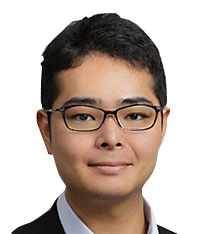
Project Research Associate
Graduate School of Information Science and Technology
The University of Tokyo
Outline
I aim to create a micro AI model leveraging an external legal knowledge graph, which systematizes legal knowledge, quantifies judicial text’s logical structures, and enhances learning efficiency. This graph not only maps references from legal texts and statutes, but also represents legal norms, main facts, and indirect facts as nodes, with their relationships as edges. By referencing this graph, the ‘micro’ AI overcomes issues like frame-setting and hallucinations, inherent in traditional monolithic AI models. Therefore, I focus on designing the foundational legal ontology and developing a search method for this graph. Furthermore, by offering quantitative methods to a legal analysis including international comparison, I aim to contribute to the emergence of a novel academic discipline in the legal field.
Yuki Saito
Human-in-the-loop adaptive text-to-speech based on interactive reinforcement learning
Grant No.:JPMJAX23CB
Researcher
Yuki Saito

Lecturer
Graduate School of Information Science and Technology
The University of Tokyo
Outline
While deep learning-based text-to-speech (TTS) technology can learn and synthesize a wide variety of speech in a data-driven manner, it cannot reproduce speaking styles outside the scope of knowledge gained in a single learning session. This research aims to realize TTS technology that can adapt and additionally learn speaking styles through interactions between users and TTS. Specifically, this research develops (1) TTS learning algorithms based on interactive reinforcement learning and (2) applications to large-scale dialect TTS learning with human users.
Maina Sogabe
Inverse Approach for Biometric Information Without Ground Truth Labels
Grant No.:JPMJAX23CC
Researcher
Maina Sogabe
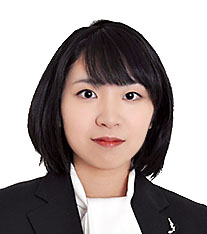
Project Lecturer
Graduate School of Engineering
The University of Tokyo
Outline
To develop superior AI, a high-quality dataset is essential. Especially in the medical field, acquiring datasets for phenomena that are unknown and involve transformations, such as accurate intraoperative bleeding estimation, is challenging. In this research, based on ground truth labels, “potential input data” is inversely generated from imitation organs that replicate intricate textures. Furthermore, by pinpointing weaknesses through Active Learning and enhancing model accuracy, this study seeks to explore methods for creating high-quality datasets without the need for animal sacrifice.
Shion Takeno
Developing practical human-in-the-loop preferential optimization method and its theoretical guarantee
Grant No.:JPMJAX23CD
Researcher
Shion Takeno
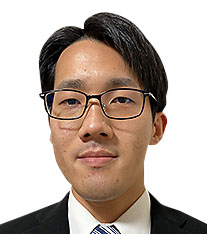
Assistant Professor
Graduate School of Engineering
Nagoya University
Outline
In practical optimization problems, relative comparisons are often easier than quantitative evaluations. Thus, preferential Bayesian optimization (PBO) aims for optimization with fewer comparisons. On the other hand, existing methods suffer from sample or computational efficiency problems. This study aims to develop a randomized PBO method, which achieves both sample and computational efficiency. Furthermore, for high practicality and reliability, I tackle generalizing to more flexible preference information and deriving theoretical guarantees.
Tsunehiko Tanaka
Human and AI Understandable Interactive Design Grammars
Grant No.:JPMJAX23CE
Researcher
Tsunehiko Tanaka
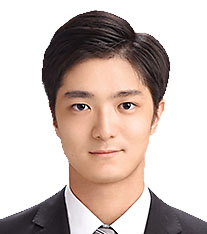
Graduate Student
Graduate School of Fundamental Science and Engineering
Waseda University
Outline
The game industry and other creative fields are being limited due to the growing complexity of projects and shortage of personnel. Generative AI seems poised to help, but is plagued by low explainability, difficulty to control, and limitations in extrapolating to new ideas outside of the training data. This research aims to overcome the fundamental problems of existing generative AI approaches by leveraging expressive and flexible grammars that are understandable to both humans creators and AI, in order to boost creativity and productivity while keeping the human creator in full control of the final product.
Yoichi Chikahara
Causal Inference from Incomplete Data for Fair Machine Learning Prediction
Grant No.:JPMJAX23CF
Researcher
Yoichi Chikahara

Research Scientist
NTT Communication Science Laboratories
NTT, Inc.
Outline
To support decisions for individuals (e.g., loan approvals and hiring decisions), machine learning predictions should be fair with respect to sensitive features, such as gender and race. My aim is to increase the practical applications of this field by focusing on the real-world data that are difficult to use, which I call incomplete data. To achieve this, I will develop the fundamental causal inference techniques that employ these data to determine the presence and direction of causal relationships between variables (known as a causal graph) and their strength (causal effects). From there, I will work on advancing machine-learning techniques that are both fair and accurate, based on the understanding of causality.
Emiko Tsutsumi
Deep learning method with educational interpretability for adaptive learning
Grant No.:JPMJAX23CG
Researcher
Emiko Tsutsumi
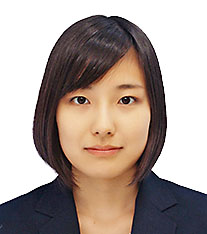
Lecturer
Department of Advanced Sciences
Hosei University
Outline
The task of tracing students’ knowledge state has attracted attention in the field of artificial intelligence. Recently, many researchers have proposed some methods using deep learning to predict student performance on unknown tasks. Especially, DeepIRT reportedly has high prediction accuracy and parameter interpretability. However, earlier methods insufficiently reflect past ability changes in the learning process because they only use the latest latent ability parameter when estimating students’ abilities. Therefore they might decrease in parameter interpretability and performance prediction accuracy. To resolve that problem, this study proposes a new DeepIRT with a convolutional neural network that stores the students’ latent abilities at each time point and convolves past multidimensional abilities. The proposed method can reflect students’ ability changes in performance prediction.
Yuiko Tsunomori
Development of a system to support verbalization
Grant No.:JPMJAX23CH
Researcher
Yuiko Tsunomori

Research Scientist
NTT Communication Science Laboratories
NTT, Inc.
Outline
I can’t express my feelings well, but something does not feel right. Have you ever suffered from such a problem? This project develops a system to solve such problems using AI technology. By interacting with this system, users can verbalize problems and solutions that they are not even aware of. The system supports the user’s verbalization with a mixture of thought-provoking questions and examples tailored to each user’s various situations and characteristics.
Yu Teshima
Building a “umwelt model” to elucidate the ecology of organisms living in the acoustic world
Grant No.:JPMJAX23CI
Researcher
Yu Teshima

Project Researcher
Project Team for SIP Ocean Program
Japan Agency for Marine-Earth Science and Technology
Outline
The aim of this study was to elucidate the ecology of bats in the sound world, as they perceive their environment primarily through sound.However, behavioural measurements of an organism can only measure one aspect of its overall behaviour. Therefore, together with behavioural measurements including acoustic information acquired by bats, we propose a virtual space framework based on a “umwelt model” in which diverse spaces can be freely constructed, and an experimental system that enables inductive understanding.
Kazuki Naganuma
Image Reconstruction for Advanced Measurement by Multimodal Dictionary Learning
Grant No.:JPMJAX23CJ
Researcher
Kazuki Naganuma

Assistant Professor
Graduate School of Engineering
Tokyo University of Agriculture and Technology
Outline
This research aims to reconstruct “measurement object-specific structures” based on an approach to learn transformations that sparsely represent structures that are difficult to model from data (the transformations are called dictionaries). Specifically, I aim to develop a multimodal dictionary learning method with “robustness to cope with severe and diverse degradation” and “flexibility to use measurement data from multiple domains in an integrated manner,” and to establish a technology to reconstruct measurement object-specific structures.
Kazumune Hashimoto
Development of Autonomous Control Systems using Deep STL generative module
Grant No.:JPMJAX23CK
Researcher
Kazumune Hashimoto
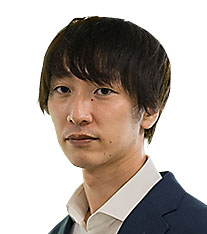
Associate Professor
Graduate School of Engineering
The University of Osaka
Outline
In this research proposal, we aim to develop a new deep learning algorithm that can execute a variety of tasks for the path planning problem of autonomous control systems. Particularly, we focus on Signal Temporal Logic (STL) that can express various temporal and spatial characteristics of time-series signals. By developing a deep STL generation module that extracts STL from surrounding environmental data through deep neural networks, we strive to build a control system that enhances explainability and autonomy.
Kosuke Hamazaki
Applying two black-box optimization methods to the determination of the optimal decision-making in breeding schemes while accounting for the breeding costs
Grant No.:JPMJAX23CL
Researcher
Kosuke Hamazaki
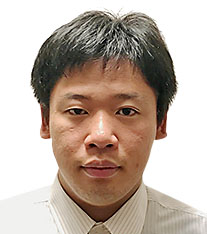
Special Postdoctoral Researcher
RIKEN Center for Advanced Intelligence Project (AIP)
RIKEN
Outline
In agriculture, there are various kinds of decision-making in developing new varieties, such as the selection of parents and mating pairs. In addition, it is assumed that various types of costs, such as phenotypig/genotyping and crossing costs, are incurred in the breeding programs. In this research project, we aim to optimize selection and mating strategies and strategies related to the overall breeding program to maximize the profit from the development of new varieties, taking these costs into account by combining two black-box optimization methods that have attracted much attention in recent years.
Akiyoshi Hara
Development of transparent bidirectional human-AI interface
Grant No.:JPMJAX23CM
Researcher
Akiyoshi Hara

Assistant Professor
Graduate School of Information Science and Technology
The University of Osaka
Outline
It is predicted that a cooperative society between humans and AI/robots will come shortly. However, research on interfaces necessary to connect humans and AI/robots is lagging, and this is a factor that reduces the production efficiency of the entire cooperative society. Therefore, this research proposal aims to develop a “transparent bidirectional interface” using conscious responses to improve the efficiency of intentionality transfer between humans and AI/robots and to verify it by targeting collision avoidance during movement.
Shota Harada
Integrated Learning of Medical Datasets Utilizing Severity Order
Grant No.:JPMJAX23CN
Researcher
Shota Harada
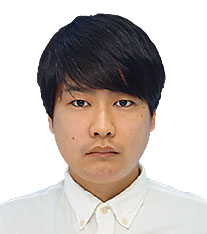
Assistant Professor
Faculty of Information Science and Electrical Engineering
Kyushu Univerity
Outline
The purpose of this study is to integrate and learn multiple severity classification datasets. In severity classification, the annotation index changes depending on the purpose and age even for the same disease. Conventional study assumes that the indices are the same, but this study does not assume it. Specifically, multiple datasets are integrated by taking advantage of the fact that the severity magnitude relationship between samples does not change even if the index changes.
Paavo Parmas
Theory, algorithms and software toward hyper-efficient Monte Carlo gradient estimation.
Grant No.:JPMJAX23CO
Researcher
Paavo Parmas
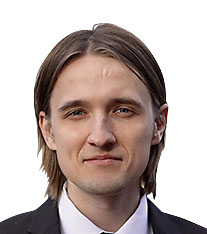
Specially Appointed Assistant Professor
Graduate School of Engineering
University of Tokyo
Outline
At the core of most modern machine learning algorithms, lies the optimization of an objective using stochastic gradient descent. While there is much research on different “objectives” and different “optimization algorithms”, there has been little progress on the method for computing the gradients. Despite the accuracy of the gradients being crucial to the speed of learning, the back propagation algorithm used for computing the gradients has remained unchanged for years. In this research, I challenge the status quo, and aim to develop new algorithms that replace back propagation to yield greatly improved gradient estimation accuracy. If successful, the research will improve the learning efficiency, and may enable training new types of models, for which back propagation is unsuitable.
Yin Jou Huang
Incorporating Meta-information in Machine Unlearning for Large Language Models
Grant No.:JPMJAX23CP
Researcher
Yin Jou Huang

Program-Specific Assistant Professor
Graduate School of Informatics
kyoto University
Outline
This research project focuses on machine unlearning for large language models, which aims to remove the influence of specific training data from the trained model. If a piece of sensitive or harmful data accidentally made its way to the training data, a language model might memorize and inadvertently reveal its content to all users, jeopardizing the integrity of the model. We could easily remove a data entry from the data storage. However, the influence of the data lingers through the models trained on this data. Thus, it is important to find a way to remove the influence of specific data from the trained model upon a data removal request.
Tomokazu Matsui
A Study on Voice Annotation of Daily Activities and Effective Interventions
Grant No.:JPMJAX23CQ
Researcher
Tomokazu Matsui
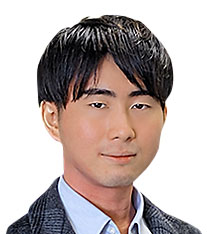
Assistant Professor
Graduate School of Science and Technology
Nara Institute of Science and Technology
Outline
Most traditional daily activity recognition systems have been primarily designed for experimental settings. For instance, annotations to gather accurate data for activity recognition are frequently perceived as just a routine. The assumption that users will operate digital devices presents challenges for acceptance in daily settings. This project aims to develop a sustainable voice annotation system that encourages residents to consider the potential acceptance of activity recognition systems in general households.
Shinnosuke Matsuo
Optimization of annotation strategies
Grant No.:JPMJAX23CR
Researcher
Shinnosuke Matsuo
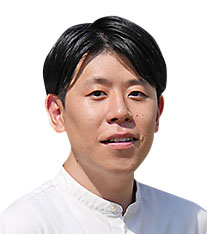
Ph.D. Student
Graduate School and Faculty of Information Science and Electrical Engineering
Kyushu University
Outline
There is a certain trade-off relationship between annotation cost and model performance (error rate). Therefore, in this study, under a fixed annotation cost, we aim to identify combinations of annotation methods that minimize the error rate. To achieve this, we first formulate it as an online resource allocation problem and apply it to toy data. Next, we apply it to the practical task of segmenting pathology images. Finally, we conduct theoretical considerations regarding accuracy assurance.
Tomoya Wakayama
Challenges to Bayesian Deep Learning with Modern Statistical Theory
Grant No.:JPMJAX23CS
Researcher
Tomoya Wakayama
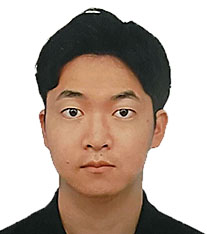
Postdoctoral Researcher
Center for Advanced Intelligence Project
RIKEN
Outline
Quantifying uncertainty and improving interpretability are essential for the practical application of deep learning in the medical and industrial fields. However, Bayesian deep learning, which makes this possible, has the disadvantage that it is difficult to achieve high accuracy. This research aims to deepen our mathematical understanding of deep learning by utilizing modern high-dimensional statistical theory and characterize the prior distributions and models required for highly accurate Bayesian deep learning.
Ryo Wakizaka
Building a software infrastructure for a high-performance and reliable large-scale distributed quantum computing
Grant No.:JPMJAX23CT
Researcher
Ryo Wakizaka

Ph.D. Student
Graduate of Informatics
Kyoto University
Outline
Scalable distributed quantum computation with quantum interconnects has garnered significant attention recently as a technology for realizing quantum applications in practical domains. Such technology needs a software infrastructure to safely and efficiently perform distributed quantum computation on constrained quantum computers. This research aims to develop programming languages, compilers, and program verification methods for large-scale distributed quantum computation to build a high-performance and reliable infrastructure for distributed quantum computation.
Kazuki Watanabe
Compositional Model Checking of Neuro-Symbolic AI
Grant No.:JPMJAX23CU
Researcher
Kazuki Watanabe
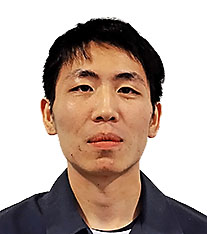
Assistant Professor
National Institute of Informatics
Research Organization of Information and Systems













